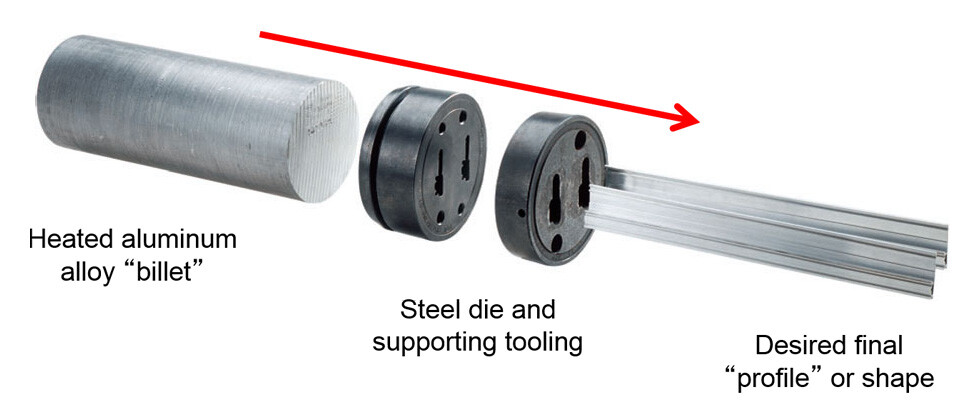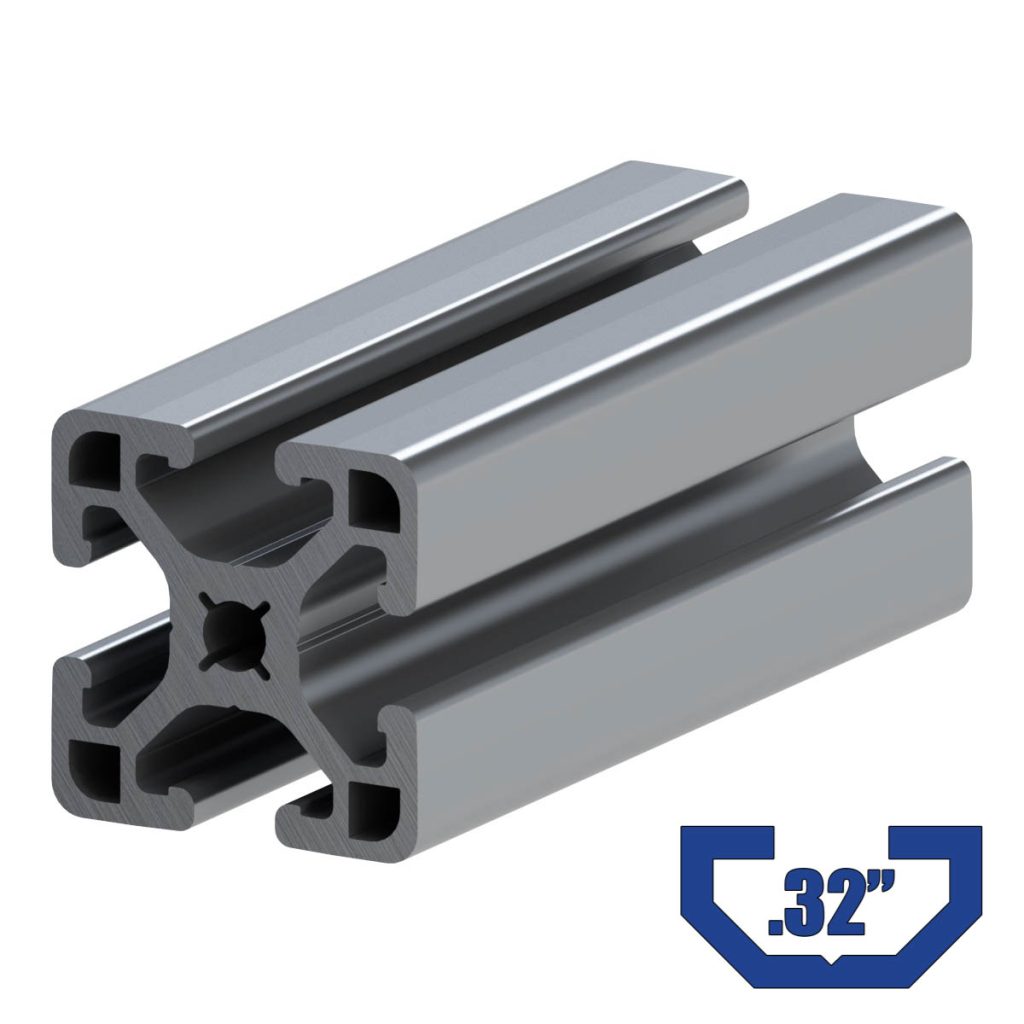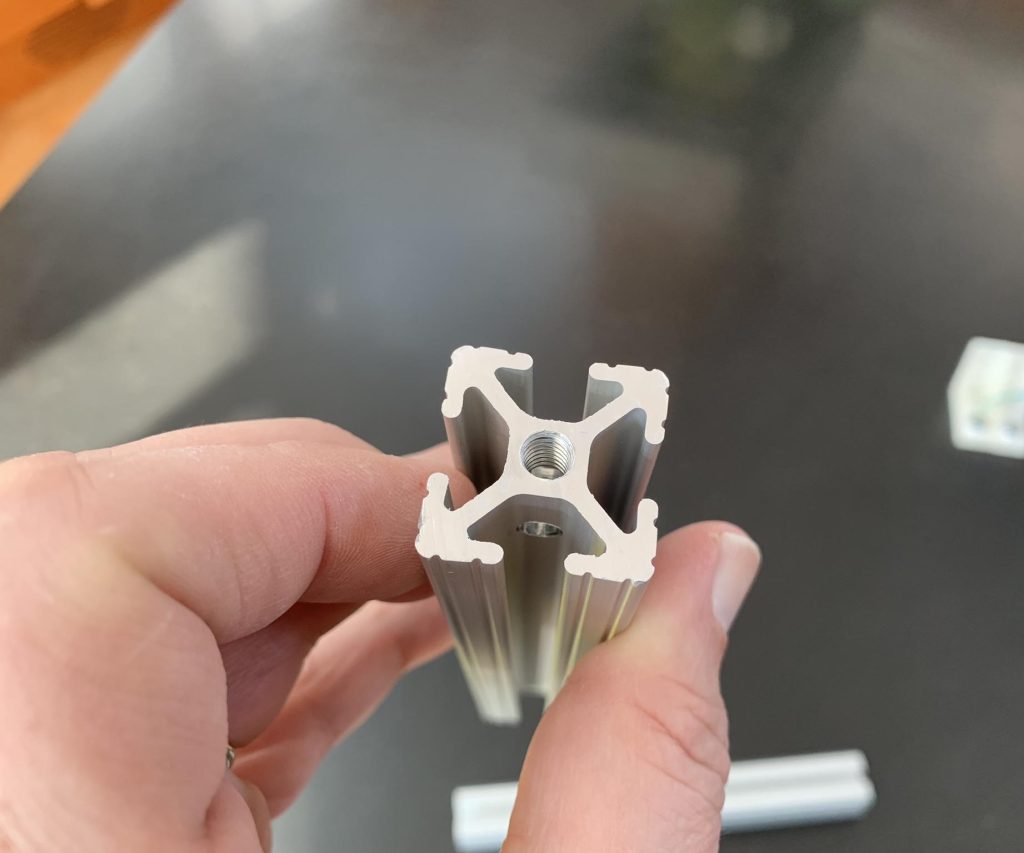If you’re looking to connect aluminum extrusions, you’re probably aware of how versatile and durable these materials can be. Whether you’re building a custom frame or a specialized piece of equipment, knowing how to properly connect aluminum extrusions can help ensure that your project is strong, stable, and long-lasting.
In this guide, we’ll explore some of the most common methods for connecting aluminum extrusions, including mechanical fasteners, welding, and adhesives. We’ll also discuss the benefits and drawbacks of each method, as well as tips for choosing the right one for your specific project. So whether you’re a seasoned DIY enthusiast or a professional fabricator, read on to learn more about how to connect aluminum extrusions.
Connecting Aluminum Extrusions: A Comprehensive Guide
Aluminum extrusions are widely used in modern construction due to their lightweight, durability, and flexibility. However, connecting them can be a complex process, especially if you are new to the world of aluminum extrusions. In this article, we will explore the various methods used to connect aluminum extrusions and provide you with a comprehensive guide to help you make the right choice for your project.
1. Mechanical Fastening
Mechanical fastening is the most common method used to connect aluminum extrusions. This method involves using screws, bolts, or rivets to join the extrusions together. One of the most significant advantages of mechanical fastening is its ease of use, making it a popular choice for DIY enthusiasts.
Mechanical fastening can also be used to connect extrusions with other materials, such as wood or plastic. However, it is important to note that mechanical fasteners can weaken the aluminum extrusions, reducing their load-bearing capacity.
2. Welding
Welding is another popular method used to connect aluminum extrusions. This method involves melting the aluminum at the joint and allowing it to cool and solidify. Welding is a permanent connection and is ideal for applications that require high strength and rigidity.
Welding can be done using various techniques such as TIG, MIG, or Stick welding. However, welding requires specialized equipment and expertise, making it a more expensive option than mechanical fastening.
3. Adhesive Bonding
Adhesive bonding is a method that involves using high-strength adhesives to join aluminum extrusions. This method is ideal for applications that require a seamless appearance, as the adhesive creates a smooth and continuous surface.
Adhesive bonding is also ideal for joining dissimilar materials, such as aluminum and plastic. However, it is important to select the appropriate adhesive for the application to ensure a strong and durable bond.
4. Interlocking Connections
Interlocking connections involve joining extrusions by interlocking their profiles. This method is ideal for applications that require a clean and seamless appearance, as it eliminates the need for visible fasteners.
Interlocking connections can be achieved using various methods, such as tongue and groove joints, snap-fit joints, or hook and loop joints. However, interlocking connections can weaken the load-bearing capacity of the aluminum extrusions, making them unsuitable for heavy-duty applications.
5. Corner Connectors
Corner connectors are specialized hardware that is used to join aluminum extrusions at corners. This method is ideal for applications that require a clean and seamless appearance, as the connectors are designed to be unobtrusive.
Corner connectors can be used to join extrusions at various angles, such as 90 degrees or 45 degrees. However, corner connectors can be expensive, and care must be taken to select the appropriate connector for the application.
6. Slotting and Clamping
Slotting and clamping involve creating slots in the extrusions and using specialized clamps to hold them together. This method is ideal for applications that require a strong and rigid connection, as the clamps provide a high clamping force.
Slotting and clamping can be used to join extrusions at various angles and can be easily adjusted or disassembled if required. However, slotting and clamping can be time-consuming and require specialized equipment.
7. Swaging
Swaging involves using a swaging tool to compress the ends of the extrusions, creating a tight and secure joint. This method is ideal for applications that require a clean and seamless appearance, as the swaged joint is virtually invisible.
Swaging is also ideal for joining extrusions with other materials, such as glass or plastic. However, swaging requires specialized equipment and expertise, making it a more expensive option than mechanical fastening.
8. Roll-In T-Slot Bolts
Roll-in T-slot bolts are specialized hardware that is used to join aluminum extrusions with T-slots. This method is ideal for applications that require a strong and rigid connection, as the bolts provide a high clamping force.
Roll-in T-slot bolts can be easily installed and adjusted, making them a popular choice for DIY enthusiasts. However, care must be taken to select the appropriate bolt size and thread type for the T-slot.
9. Benefits of Aluminum Extrusions
Aluminum extrusions offer numerous benefits over traditional building materials such as wood or steel. These benefits include:
– Lightweight and easy to handle
– Resistant to corrosion and weathering
– High strength-to-weight ratio
– Flexible and adaptable to various design requirements
– Sustainable and recyclable
10. Aluminum Extrusions Vs. Other Materials
Aluminum extrusions offer several advantages over other building materials such as wood or steel. These advantages include:
– Lower maintenance costs
– Greater design flexibility
– Greater durability and longevity
– Lower environmental impact
In conclusion, connecting aluminum extrusions requires careful consideration of the application requirements and the available connection methods. Mechanical fastening, welding, adhesive bonding, interlocking connections, corner connectors, slotting and clamping, swaging, and roll-in T-slot bolts are some of the most popular methods used to connect aluminum extrusions. By understanding the advantages and limitations of each method, you can make an informed decision and ensure a strong and durable connection for your project.
Frequently Asked Questions
How can I connect aluminum extrusions?
Aluminum extrusions can be connected using different methods, such as brackets, screws, and bolts. One of the most popular ways to connect aluminum extrusions is by using special T-slot nuts that slide into the extrusion’s T-slot. These nuts allow you to attach other extrusions, brackets, or accessories to the extrusion. To connect two extrusions, you need two T-slot nuts, one for each extrusion, and a bolt that goes through both nuts. You can adjust the position of the nut along the T-slot to get the desired alignment.
Another method to connect aluminum extrusions is by using corner brackets. These brackets have pre-drilled holes that align with the T-slot of the extrusions. You can attach the brackets to the extrusion using T-slot nuts and bolts. The brackets allow you to create strong and stable joints between extrusions, making them ideal for building frames, enclosures, or workstations.
What are the benefits of using aluminum extrusions?
Aluminum extrusions are a versatile and cost-effective solution for building structures, enclosures, and machines. Compared to other materials, such as steel, wood, or plastic, aluminum extrusions offer several advantages, such as:
– Lightweight: Aluminum extrusions are light and easy to handle, making them suitable for applications where weight is a critical factor, such as transportation or mobile machinery.
– Strong: Aluminum extrusions have a high strength-to-weight ratio, meaning they can support heavy loads while maintaining their structural integrity.
– Durable: Aluminum extrusions are resistant to corrosion, weathering, and wear, making them ideal for outdoor or harsh environments.
– Customizable: Aluminum extrusions can be easily cut, drilled, and assembled to create custom shapes and sizes. They also offer a wide range of surface finishes and colors to match your design requirements.
Can I cut aluminum extrusions myself?
Yes, you can cut aluminum extrusions yourself using a saw or a cutting tool. However, you need to be careful to avoid damaging the extrusion’s surface or structure. Before cutting the extrusion, make sure you have the right tools and safety equipment, such as gloves, goggles, and a dust mask. Also, measure and mark the cutting line accurately to avoid mistakes.
One effective way to cut aluminum extrusions is by using a miter saw with a carbide blade. This type of saw can make precise and clean cuts without damaging the extrusion’s surface. You can also use a hacksaw or a circular saw with a metal cutting blade, but these tools may require more effort and care.
How can I assemble aluminum extrusions without drilling holes?
If you want to assemble aluminum extrusions without drilling holes, you can use special connectors that clamp onto the extrusion’s surface. These connectors come in different shapes and sizes, such as corner connectors, T-connectors, and straight connectors. They have a set screw or a cam lock mechanism that tightens the connector onto the extrusion, creating a secure joint.
Another way to connect aluminum extrusions without drilling holes is by using adhesive tape. You can apply a double-sided tape to the extrusion’s surface and attach another extrusion or accessory to it. This method works well for lightweight applications, but may not be suitable for heavy loads or high-stress environments.
How can I protect the surface of aluminum extrusions?
To protect the surface of aluminum extrusions, you can use different methods, such as anodizing, painting, or powder coating. Anodizing is a process that creates a hard and durable oxide layer on the surface of the extrusion, making it resistant to corrosion and wear. Anodized aluminum extrusions can also have different colors and finishes, such as matte, gloss, or brushed.
Painting is another way to protect the surface of aluminum extrusions and add color or texture to them. You can use different types of paint, such as acrylic or epoxy, depending on your application requirements. However, painting may require more maintenance and may not be as durable as anodizing.
Powder coating is a popular method to protect and decorate aluminum extrusions. It involves applying a dry powder coating to the extrusion’s surface and then curing it using heat. Powder coating creates a smooth and uniform finish that is resistant to chipping, scratching, and fading. It also offers a wide range of colors and textures to choose from.
In conclusion, connecting aluminum extrusions can seem like a daunting task, but with the right tools and techniques, it can be a straightforward process. Remember to choose the appropriate fasteners and connectors for your project, and ensure they are compatible with aluminum extrusions.
Additionally, consider the strength and durability of your connections and use reinforcement techniques, such as welding or adhesive bonding, if necessary. Taking the time to properly connect your aluminum extrusions will ensure the longevity and stability of your project.
Lastly, don’t hesitate to seek professional advice or assistance if you are unsure about any step of the process. With the right knowledge and guidance, you can confidently connect your aluminum extrusions and create a strong, reliable structure.
Request a quote today!
[contact-form-7 id="1578" title="Contact form"]
Please compress the file into a ZIP or RAR file before uploading. Alternatively, send through your RFQ by email.
enquires@unitymanufacture.com





